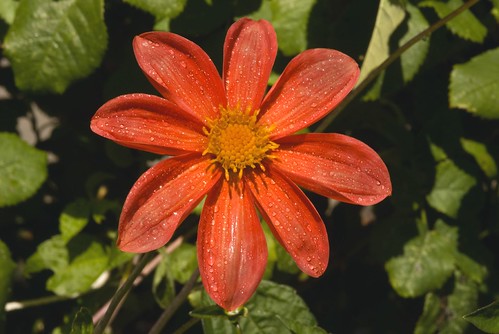I shot these two photos of a dahlia to illustrate the impact of aperture on depth of field. The photo above, with a large aperture of f/4, has minimal depth of field, while the photo below with a small aperture of f/32 has much more depth of field.
The flower is in focus in both photos. In the low depth-of-field image (above) the background is out of focus, and therefore visually separated from the foreground.
In this situation, the low depth-of-field image is preferrable. An important point with low depth-of-field photos: since most of the photo will be out-of-focus, try to maximize the focus you do have by placing the camera as parallel as possible to the primary subject of the photo.
[Both photos: 105mm f/2.8 macro lens, 157.5mm in 35mm terms, ISO 100, tripod mounted. Above 1/1250 of a second at f/4, below 1/20 of a second at f/32.]


Pingback: Photoblog 2.0: » Photoblog 2.0 Archive: » Focus
Pingback: Depth of Field « Scribbling with light…